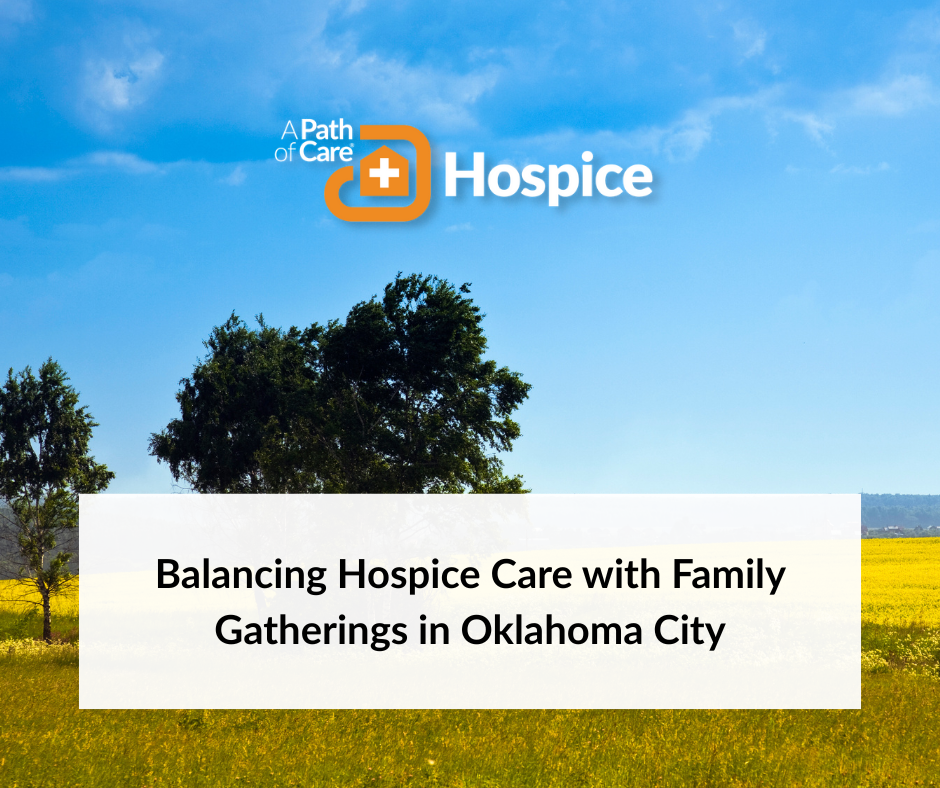Understanding Hospice: When to Consider It
Navigating the complexities of end-of-life care can be challenging. A Path of Care Hospice supports patients and families coping with life-limiting illnesses. The focus shifts from curing a disease to managing comfort and quality of life. Here’s a closer look at when and why you should consider hospice care.

When to Consider Hospice Care
Hospice care is appropriate when a patient has a life-limiting illness with a prognosis of six months or less if the disease follows its normal course. This care is most beneficial when:
- Treatment is No Longer Effective: When treatments aimed at curing the illness are no longer working.
- Quality of Life Declines: When the focus shifts from prolonging life to enhancing the quality of remaining life.
- Frequent Hospitalizations: When repeated hospital visits become necessary, and managing symptoms at home becomes more practical.

1. Treatment is No Longer Effective
There comes a point in many serious illnesses when treatments stop being effective. Continuing aggressive treatments can lead to more pain and discomfort. A Path of Care Hospice shifts the focus from curing the illness to providing comfort and improving the quality of life.
2. Quality of Life Declines
As a serious illness progresses, patients often experience a decline in their overall quality of life. Pain, shortness of breath, fatigue, and loss of appetite can impact daily living. A Path of Care Hospice helps manage these symptoms to make the patient as comfortable as possible.

3. Frequent Hospitalizations
For many patients with serious illnesses, frequent hospital stays become a part of life. Each hospital visit can be stressful, exhausting, and emotionally draining for both patients and their families. A Path of Care Hospice can reduce the need for these hospitalizations by providing comprehensive care at home.
Benefits of Hospice Care
A Path of Care Hospice provides a holistic approach, addressing not just physical needs but also emotional, social, and spiritual ones. The goal is to ensure that patients live their remaining days as fully and comfortably as possible. Here are some key benefits:
1. Symptom Management
A Path of Care Hospice includes expert management of symptoms such as pain, nausea, and shortness of breath. The care team is skilled in the latest techniques to alleviate discomfort and improve the patient’s quality of life.
2. Emotional and Spiritual Support
A Path of Care Hospice provides emotional and spiritual support for patients and their families. This includes counseling, support groups, and spiritual care to help cope with the emotional challenges of terminal illness.
3. Family Involvement and Support
A Path of Care Hospice actively involves family members in the care process, providing them with support and guidance. Caregivers are trained to help families understand what to expect and how to provide care.
[[cta]]
How to Begin Hospice Care
If you believe hospice care may be the right choice for you or a loved one, please call us. We can help determine if hospice care is appropriate based on the patient’s condition and prognosis, and then coordinate a discussion with your healthcare provider. Once a decision is made, A Path of Care Hospice will work with you to develop a personalized care plan.

Choosing A Path of Care Hospice is a compassionate decision that prioritizes the comfort and quality of life for patients with life-limiting illnesses. It provides comprehensive support for both patients and their families, ensuring they are not alone during this difficult journey. If you or a loved one is facing a terminal illness, consider discussing hospice care options with your healthcare provider to determine the best path forward.






